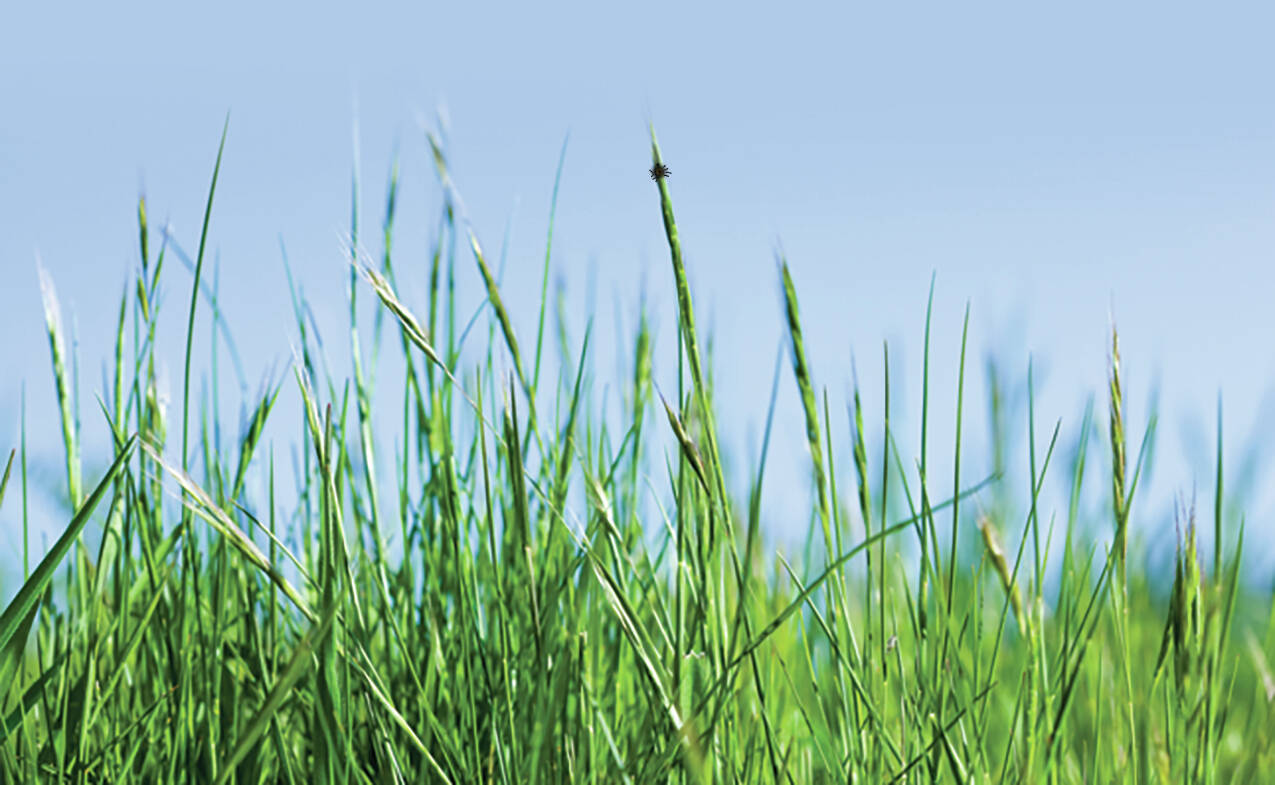The fantastic fall season is just around the corner: cooler days, less traffic, and an essential time to fertilize your lawn for an outstanding next year!
Fertilizing a lawn maintains grass density, plant vigor and color. Unfertilized lawns slowly lose color and density. A less dense lawn allows weeds and pests to encroach with greater ease.
This all starts with knowing what your lawn needs — and that’s where a soil test comes in.
A soil test can also save you money by prescribing how much and which types of nutrients and/or amendments are needed instead of guessing or over-applying.
Soil tests for lawns will analyze various nutrients such as nitrogen (greens up your lawn and helps it grow), phosphorus (stimulates root growth), and potassium (helps with overall plant health).
You may have noticed three numbers on fertilizer bags, such as 16-4-8. These numbers stand for nitrogen, phosphorous, and potassium, or N-P-K, respectively. They tell you the percentage of those nutrients by weight in the product.
Those percentages rarely add up to 100 percent. Ballast makes up the rest for broadcasting.
If you have not done a soil test yet, then selecting a product with either 16-4-8 or 15-0-15 is a reasonable choice. Nitrogen is typically the greatest amount applied because it has the most impact on plant growth.
Be careful about selecting fertilizers that contain high amounts of nitrogen because of the risk of burning the grass.
Get your numbers
To determine how much fertilizer to apply, you first need to know the area you plan to treat. The area of the lawn can be calculated with a tape measure.
First, measure the length and width of each section of lawn. Next, multiply the length by the width of each section. Finally, add up each section to get the total area in square feet.
A soil test will specify the target application rate. Alternatively, fertilizer bags are often labeled with the square footage that the product will cover.
Lawn fertilizers are broadly classified into two categories based on the type of nitrogen they contain. Quick-release nitrogen is rapidly absorbed directly by the grass for short-term rapid greening. It can also readily leach into waterways.
Slow-release nitrogen gradually does its greening over several weeks for a more uniformed growth with less chance of burning the grass.
Another issue is whether to select a product with phosphorus (the middle number nutrient). Established lawns in this area rarely need additional phosphorus. Again, a soil test will measure this nutrient.
By choosing low or no phosphorus fertilizers with ratios such as 16-4-8 or 15-0-15, you are helping protect waterways from troublesome phosphate pollution.
Also, you have the option of using organic or synthetic fertilizers. Organically derived fertilizers feed the beneficial soil microbes, which in turn release nutrients for roots to absorb.
Organic fertilizers are more expensive; however, they also provide the secondary and micro-nutrients plants need, which are usually absent in synthetic fertilizers. Although their N-P-K percentages are lower than synthetics, they feed the lawn for a much longer period of time.
Be patient with the slow start associated with using organics: your reward is a lawn that stays greener longer.
Plants can take up synthetic fertilizers almost immediately. While this provides rapid greening, the color won’t last as long and it is easier to burn a lawn with synthetics.
Additionally, the process of manufacturing synthetic fertilizers is more harmful to the environment.
A successful strategy is to fertilize both in the early fall and then again in mid-November. This helps feed fall and winter root growth, as the lawn stores nutrients for the next spring.
Another benefit to a soil test is learning the acidity or pH of your lawn. The ideal pH range for a healthy lawn is between 6.0 and 7.0. Anything higher or lower may result in unhealthy turf.
Your lawn is considered acidic when the pH of the soil falls below 6.0, at which point a lime treatment may be beneficial.
Lawns in our area tend to be acidic. That limits the availability of nutrients for turf health.
A soil test will tell you how much lime is needed. The pellet-like form of lime is significantly easier to use than the powdered form. Established lawns should be tested every three to four years.
Final thought: Lawns are a great component to the landscape; however, they often take more work and resources than planting beds. Fall is a wonderful time to reduce parts of the lawn and create new planting beds.
This season is also an ideal time to buy plants on sale and/or do some transplanting for these new planting beds. Friends and neighbors are often ideal sources for transplants!
Learn more about Clallam County Conservation District Soil Testing at clallamcd.org/soil-testing.
Learn more about fertilizing lawns at extension.purdue.edu/extmedia/ay/ay-22-w.pdf.
Please read product labels carefully. Happy fertilizing!
Dave Eberle is a Clallam County Master Gardener.
Editor’s note: This is the fourth and final article in a series on lawn care for this year. — MD



